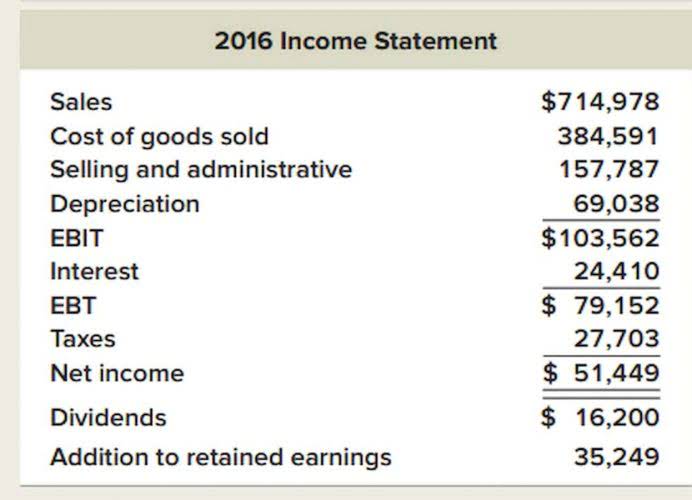
Most corporations in the U.S. are not publicly traded, so do these corporations use U.S. A non-public corporation can use cash basis, tax basis, or full accrual basis of accounting. Most corporations would use a full are retained earnings a current liabilities accrual basis of accounting such as U.S. Cash and tax basis are most likely used only by sole proprietors or small partnerships. Both U.S. GAAP and IFRS require the reporting of the various owners’ accounts.
Do you already work with a financial advisor?
Now that you’ve learned how to calculate retained earnings, accuracy is key. The purpose of a balance sheet is to ensure all your bookkeeping journal entries are correct and every penny is accounted for. Businesses take on expenses to generate more revenue, and net income is the difference between revenue (inflow) and expenses (outflow). Expenses are grouped toward the bottom of the income statement, and net income (bottom line) is on the last line of the statement. Sum all costs your company incurs, including cost of goods sold, salaries, rent, and other operating expenses. The par value of a stock is the minimum value of each share as determined by the company at issuance.
- Since they represent a company’s remainder of earnings not paid out in dividends, they are often referred to as retained surplus.
- If it is kept as retained earnings, it remains on the books and is available for use within the business.
- Below is a short video explanation to help you understand the importance of retained earnings from an accounting perspective.
- This statement is a great way to analyze a company’s financial position.
- These statements report changes to your retained earnings over the course of an accounting period.
- A balance sheet is a key financial statement that provides a telling snapshot of what a company owns and owes, as well as revealing how much shareholders have invested in it.
- Current assets represent all the assets of a company that are expected to be conveniently sold, consumed, used, or exhausted through standard business operations within one year.
Calculate Retained Earnings on a Balance Sheet
- Accordingly, the normal balance isn’t an accurate measure of a company’s overall financial health.
- This is the amount of retained earnings to date, which is accumulated earnings of the company since its inception.
- As a result, any items that drive net income higher or push it lower will ultimately affect retained earnings.
- The Journal of Accountancy, a periodical published by the AICPA, offers guidance in how to manage this process.
- Second quarter 2024 gross profit was $589 million compared to $581 million in the prior year.
- Your current retained earnings are simply whatever you calculated during your last financial period.
The correction may impact both balance sheet and income statement accounts, requiring the company to record a transaction that corrects both. Since income statement accounts are closed at the end of every period, the journal entry will contain an entry to the Retained Earnings account. As such, prior period adjustments are reported on a company’s statement of retained earnings as an adjustment to the beginning balance of retained earnings. By directly adjusting beginning retained earnings, the adjustment has no effect on current period net income. The goal is to separate the error correction from the current period’s net income to avoid distorting the current period’s profitability. In other words, prior period adjustments are a way to go back and correct past financial statements that were misstated because of a reporting error.
Retained Earnings vs. Profit

Any profits not distributed at the end of a fiscal year are considered retained earnings. You can also store receipts, have a choice between cash and accrual accounting, and run reports when you need to. The company will report the appropriate retained earnings in the earned capital section of its balance sheet. It should be noted that an appropriation does not set aside funds nor designate an income statement, asset, or liability effect for the appropriated amount. The appropriation simply designates a portion of the company’s retained earnings for a specific purpose, while signaling that the earnings are being retained in the company and are not available for dividend distributions. Current liabilities are a company’s short-term financial obligations that are due within one year or within a normal operating cycle.
Common Small Business Budget Categories
As mentioned above, companies accumulate their profits or losses for several periods under this balance. However, they must deduct any dividends paid to shareholders from those amounts. Retained earnings accumulate all profits and losses from when a company starts operating. However, it also deducts dividends from those amounts before reporting them on the balance sheet.
- Corporations with net accumulated losses may refer to negative shareholders’ equity as positive shareholders’ deficit.
- Sole proprietorships utilize a single account in owners’ equity in which the owner’s investments and net income of the company are accumulated and distributions to the owner are withdrawn.
- Suppose a company receives tax preparation services from its external auditor, to whom it must pay $1 million within the next 60 days.
- This figure is subtracted from a company’s total equity, as it represents a smaller number of shares that are available to investors.
- Retained earnings are also known as retained capital or accumulated earnings.
- Other restrictions are contractual, such as debt covenants and loan arrangements; these exist to protect creditors, often limiting the payment of dividends to maintain a minimum level of earned capital.
How Do You Calculate Retained Earnings on the Balance Sheet?
These and other factors could have an adverse effect on Zebra’s sales, gross profit margins and results of operations and increase the volatility of Zebra’s financial results. Sometimes, companies use an account called other current liabilities as a catch-all line item on their balance sheets to include all other liabilities due within a year that are not classified elsewhere. The company believes it is useful to present non-GAAP financial measures, which exclude certain significant items, as a means to understand the performance of its ongoing operations and how management views the business. These measures, however, should not be construed as an alternative to any other measure of performance determined in accordance with GAAP.
Create a free account to unlock this Template
For instance, if you prepare a yearly balance sheet, the current year’s opening balance of retained earnings would be the previous year’s closing balance of the retained earnings account. Movements in a company’s equity balances are shown in a company’s statement of changes in equity, which is a supplementary statement that publicly traded companies are required to show. Both the beginning and ending retained earnings would be visible on the company’s balance sheet. As such, the statement of changes in equity is an explanatory statement.

You have beginning retained earnings of $4,000 and a net loss of $12,000. As you work through this part, remember that fixed assets are considered non-current assets, and long-term debt is a non-current liability. If every transaction you post keeps the formula balanced, you can generate an accurate balance sheet.

How to calculate the effect of a cash dividend on retained earnings
Alternatively, companies take the net income for the period to the retained earnings account first. Examples of these items include sales revenue, cost of goods sold, depreciation, and other operating expenses. Non-cash items such as write-downs or impairments and stock-based compensation also affect the account. Any changes or movements with net income will directly impact the RE balance. Factors such as an increase or decrease in net income and incurrence of net loss will pave the way to either business profitability or deficit. The Retained Earnings account can be negative due to large, cumulative net losses.


